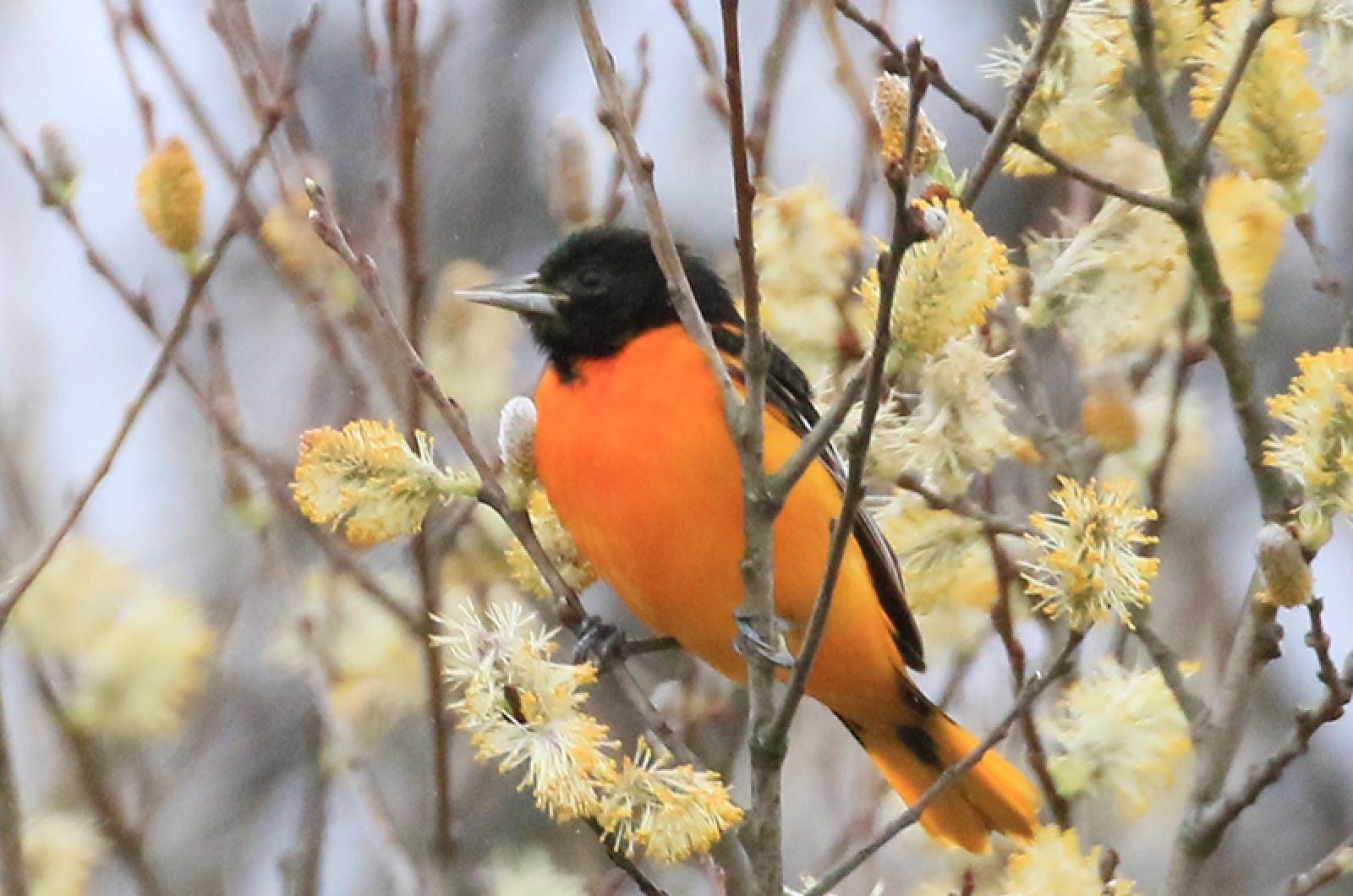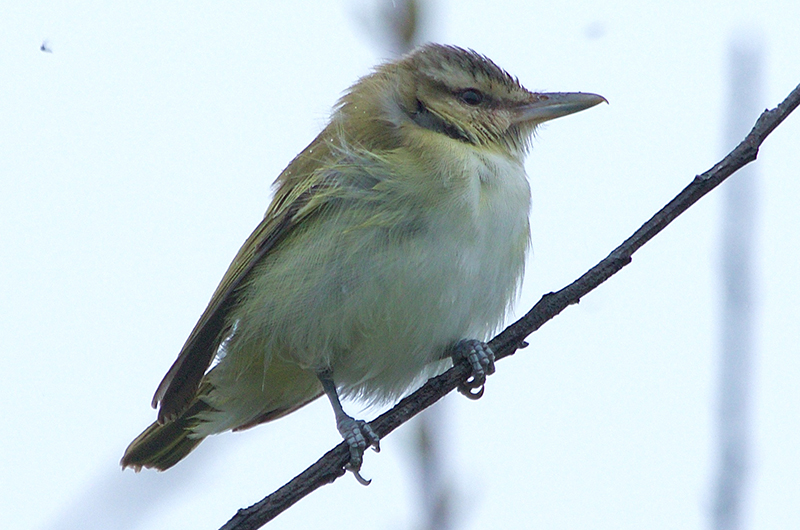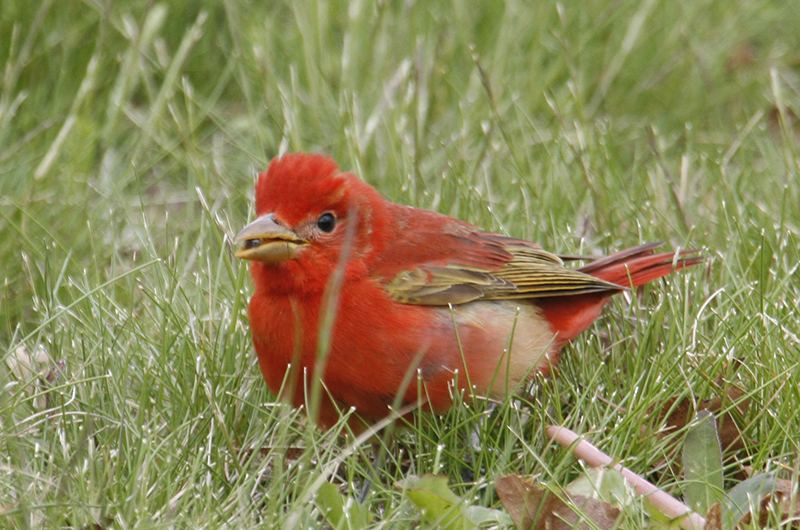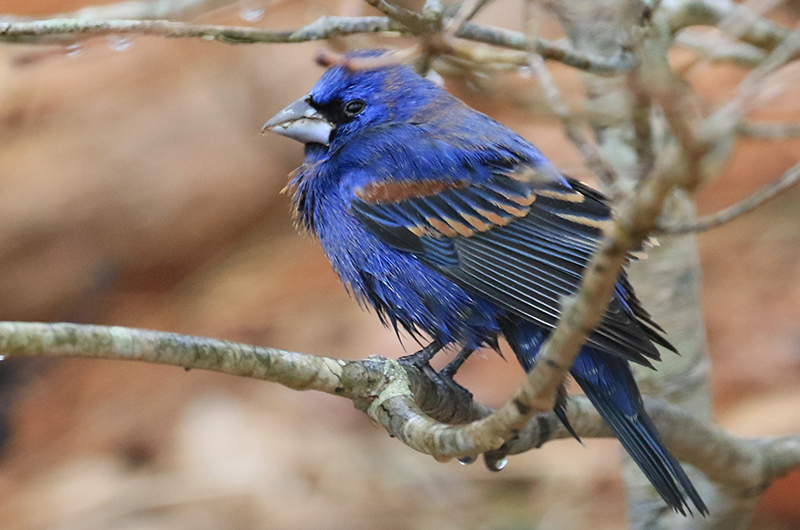Our recent strong southerly winds have unleashed a torrent of migrants, torrent that will now continue for the next month or so as our breeding songbirds and waterbirds return from their winter haunts.
How often do we get a weird migrant whose northernmost breeding range is a mangrove swamp in coastal southern Florida? Or further south in the Bahamas and the Caribbean Islands? A black-whickered vireo was seen by Ken Magnuson, a veteran Island birder whose sightings are frequently cited in this column, on April 21 at the Edgartown Golf Club. This is the first sighting of this species on Martha’s Vineyard or anywhere else in Massachusetts. And only the seventh time this species has been seen north of Florida.
“I first saw it as it flew in front of my truck,” Mr. Magnuson reported. “I thought it might be an early worm-eating warbler but the first field mark I saw after getting out of the truck was the black whiskers on each side of the throat.”
The black whickers distinguish the bird from the similar red-eyed vireo, a common breeding species on the Vineyard although they have not yet arrived for the season.
Mr. Magnuson took many pictures of the bird and later confirmed the identification after consulting field guides. Many sports are games where inches matter; birding is a hobby where seconds matter. “If I had arrived 30 seconds earlier or 30 seconds later I would not have seen this bird fly across the road!”
The vireo has not been seen since, even though Mr. Magnuson, Lanny McDowell, Allan Keith, Wendy Culbert and I thoroughly searched the area that afternoon. Mr. Magnuson and Mr. McDowell were back, unsuccessfully searching for the bird the next morning.
Bird Sightings
Those same southerly winds that brought the black-whickered vireo also brought a torrent of other, much more colorful species to the Island.
Mr. McDowell and Mr. Magnuson found some consolation birds when they did not find the vireo on April 22, including palm warbler (yellow), blue grosbeak, Baltimore oriole (orange), and both scarlet and summer tanager (both red).
Tony Lima reports several blue grosbeaks at the Chappy golf course, also on April 22. Scarlet tanagers have also been reported by Daryl Knight as she walked the bluff path at Wasque Reservation on April 21.
David Welch observed two male scarlet tanagers in his yard on April 22, while Becca LaMarche observed a single male scarlet tanager in Dodger’s Hole the same day. Meanwhile, David Welch also spotted a male summer tanager on April 22, as did Dan Bradley.
Another Baltimore oriole was observed by Martha Moore near Middlepoint Cove on April 21. Indigo buntings were also reported by Maura Fitzgerald, Margaret Isham and Mary Beth Baptiste on April 21. To round out the array of colorful arrivals, Mary Beth Baptiste also reports a rose-breasted grosbeak in her yard.
It takes a lot to push the eagerly anticipated arrival of ruby-throated hummingbirds this far down the column! John Nelson reports the first hummer on April 19 in Harthaven, and Alyssa Boyle Starzyk spotted one in Katama the next day. Norma Holmes observed one at her Katama feeders on April 21, as did Polly Bassett in West Tisbury. Nancy Weaver’s sighting of one buzzing some orange flagging hanging on a shrub is rather unexpected. And to top off the early hummers, Kathy Landers spotted one on April 22.
Barn swallows are another new arrival that showed up on April 22, spotted by Lanny McDowell.
This column welcomes sightings from Cuttyhunk. Lisa Wright reports a pair of glossy ibis way back on April 17, and based on the photos it looks like they are nesting there. Why haven’t we seen them on this Island? They used to breed in the formerly large heron and egret colony out on Cape Poge in the mid 1980s.
Now we finally get to winter resident species that are in the process of migrating to their more northern breeding grounds. Northern gannets figure prominently in this discussion, as they are still streaming by. Warren Woessner spotted a flock of them near Menemsha on April 19, and two days later Lanny McDowell observed a lot of them as they were foraging off Aquinnah in the fog. That same day, Connie Alexander observed a number of them off West Chop.
Warren Woessner also found a common loon in full breeding plumage on April 19, while Terry Morrison also found one on Lake Tashmoo on April 19. Some red-breasted mergansers were spotted by Laura Lennihan off West Chop on April 21. And Norma Holmes and I have seen the brant off West Chop and at Ocean Park respectively, so they have not yet departed.
Nor have the red-breasted nuthatches left us. Allan Keith and I spotted several at Pecoy Point Preserve on April 16, mixed in with a flock of chickadees and at least three pine warblers.
Norma Holmes visited Great Rock Bight on April 17, where her highlights included a hairy woodpecker, lots of tufted titmice, eastern towhees and white-throated sparrows.
Finally, Dan Bradley yellow-bellied sapsucker at his feeder.
The northward migration of birds peaks mow and the torrent of migrants will continue through the month of May! Please report your sightings to birds@mvgazette.com.
Robert Culbert schedules private guided birding tours, and is an ecological consultant with Nature Watch LLC living in Vineyard Haven.







Comments (1)
Comments
Comment policy »